Knowing the weight of an ATV can be an important factor in deciding which ATV to buy. The most obvious reason is to ensure you have capable means of moving the ATV. Is it light enough that it can sit in the bed of your truck or on your trailer? Can you haul it with your mini SUV or do you need to buy a truck? These questions may depend on the weight of your ATV. But, that is not the only reason you should be interested in the weight of an ATV. You want to make sure you are able to lift the front or rear end of your ATV or push it up an incline if necessary. If you weigh 120 pounds, you may not want to get stuck with a 900 pound machine. If you are going to be riding places where you could roll your ATV, there is a big difference between 300 pounds and 900 pounds rolling over you. Finally, the weight of the ATV is going to determine, to an extent, how much control you have and how sharply you can turn in some cases.
So what does an average ATV weigh? About 590 pounds or 268 kg dry weight.
But, the weight of the ATV you are looking at probably won’t be 590 pounds. The weight is going to depend mostly on the size of your engine (cc), but even within those sizes, there is a lot of variance. However, it is pretty safe to say a 90cc ATV is going to weigh quite a bit less than an 800cc ATV. Finding the right ATV is going to depend on a lot of factors, including the weight, dimensions and engine power. You can find out all about different ATV sizes in our complete guide to ATV dimensions and if you need to figure out what size to buy, check out this awesome guide.
Below, you can find the most complete guide available on ATV weight based on engine class (by cc).
Wherever possible, the weight given is the dry weight. This is the measurement used by most manufacturers. It is the weight of the ATV as you would see it on the showroom floor, with no oil, gasoline or other fluids in it. Other manufacturers, such as Honda, use what is called
curb weight, wet weight or ready to ride. This refers to the weight of the ATV with all standard equipment, all fluids and a full tank of gasoline. On an ATV, this won’t add a ton of weight and is not enough that it would impact your decision on buying an ATV. Finally, you may come across a listing for Gross Weight. This refers to the ATV and the total load it can carry including optional equipment and riders.
Other manufacturers, such as Honda, use what is called
curb weight, wet weight or ready to ride. This refers to the weight of the ATV with all standard equipment, all fluids and a full tank of gasoline. On an ATV, this won’t add a ton of weight and is not enough that it would impact your decision on buying an ATV. Finally, you may come across a listing for Gross Weight. This refers to the ATV and the total load it can carry including optional equipment and riders.
For each class of ATV, I found as many examples as I reasonably could and compared their listed weights to determine the average and any trends I mention.
The smallest entry-level youth ATVs are, of course, the lightest. The average weight of a 50cc ATV is about 215 pounds. The heaviest 50cc ATV I found was the Yamaha Raptor 50, which weighs 237 pounds. The lightest 50cc ATV I found was the Suzuki QuadSport Z50, which weighs less than me at only 174 pounds.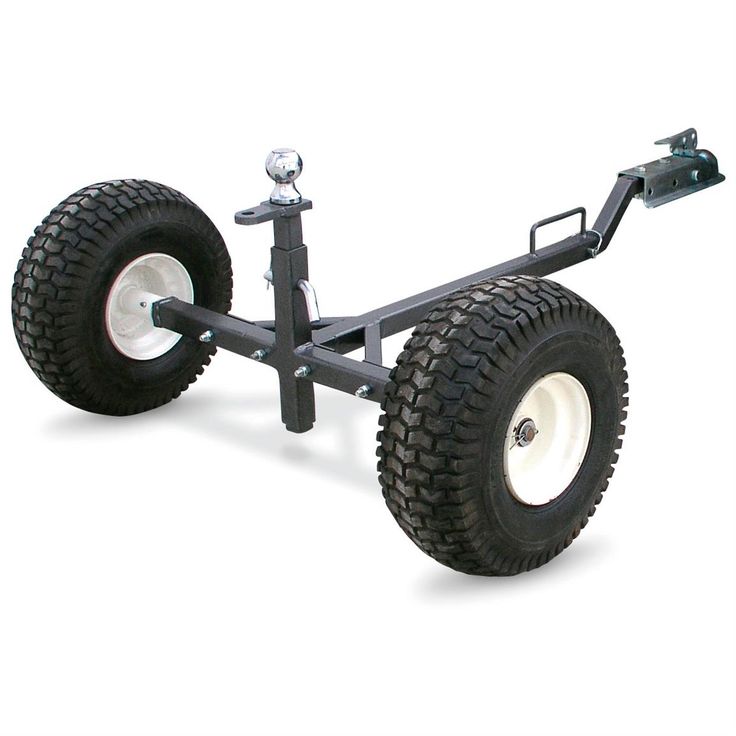 Most of the ATVs I saw fell in the 210-225 pound range.
Most of the ATVs I saw fell in the 210-225 pound range.
I could only find a few name-brand ATVs in the 70cc class. The average weight of those was about 250 pounds.
This is probably the most popular sized ATV for kids. The average 90cc ATV weighs about 265 pounds. The largest 90cc ATV I found was the AlphaSports Daisy 90, which weighs 289 pounds. The lightest, by a single pound, was the Bombardier DS 90, which weighs 249 pounds. Most of the 90cc ATVs I saw were in the 250-260 pound range, with a few heavier exceptions skewing the average.
200cc is the class where we start getting into the bigger youth models, but there is not a huge selection at 200cc. The average 200cc ATV weighs about 365 pounds. That average is again skewed by an outlier in the super-light Yamaha Blaster, which only weighs 250 pounds.
Most of the other 200cc ATVs were in the upper 300s or lower 400s, with the Polaris Saw Tooth topping the charts at 425 pounds.
The average 250cc ATV weighs about 410 pounds. The lightest, by a fairly wide margin was the Honda TRX 250EX, which weighs only 360 pounds. The heaviest 250cc ATV I found was the Yamaha Big Bear 250, which weighs 456 pounds.
300cc is not a very popular class of ATVs so there weren’t many options. The heaviest 300cc ATV I found was the Polaris Hawkeye, which weighs 550 pounds. The lightest 300cc ATV I found was the Arctic Cat 300, which weighs 477 pounds. The average 300cc ATV weighs about 510 pounds.
The average 350cc ATV weighs about 490 pounds. This number was skewed downwards by the 375 pound Yamaha Raptor 350, which weighs 375 pounds. Most of the 350cc ATVs I saw were closer to, or over, 500 pounds. The heaviest 350cc ATV is the Arctic Cat 350, which weighs in at a relatively whopping 588 pounds.
At 400cc, we start getting into the more adult-sized ATVs. The average 400cc ATV weighs about 495 pounds.
This is the lightest class where we really start seeing some huge ranges in weight with stark differences between sport and utility models. The lightest and heaviest 400cc ATVs are from Arctic Cat. The lightest is the Sport DVX 400, which weighs 372 pounds. The heaviest is the 400 4X4 Auto, which comes in at 645 pounds.
The average 400cc ATV weighs about 495 pounds.
This is the lightest class where we really start seeing some huge ranges in weight with stark differences between sport and utility models. The lightest and heaviest 400cc ATVs are from Arctic Cat. The lightest is the Sport DVX 400, which weighs 372 pounds. The heaviest is the 400 4X4 Auto, which comes in at 645 pounds.
The average 450cc ATV weighs about 520 pounds, but there is a big difference between the sport and utility models in this class. The lighter sport models typically weigh less than 400 pounds. The lightest of which is the Yamaha YFZ 450, which weighs 350 pounds. The heavier utility models are 500-700 pounds. The heaviest I saw was the 696 pound Polaris Sportsman 450.
The average 500cc ATV weighs about 630 pounds. The two outliers bringing the average weight down are the Polaris Outlaw 500, at 425 pounds, and the Polaris Predator 500, at 405 pounds. Most of the other 500cc ATVs I reviewed weighed more than the average of 630 pounds. The heaviest 500cc model I found was the Polaris Sportsman 500 X2 EFI, which weighs 791 pounds. As you might be catching on, The various Polaris Sportsman ATVs are usually heavier than their counterparts.
Most of the other 500cc ATVs I reviewed weighed more than the average of 630 pounds. The heaviest 500cc model I found was the Polaris Sportsman 500 X2 EFI, which weighs 791 pounds. As you might be catching on, The various Polaris Sportsman ATVs are usually heavier than their counterparts.
The average 650cc ATV weighs about 635 pounds. The heaviest machine I found at 650cc was the Arctic Cat h2 TRV Plus, which weighs in at 724 pounds. The lightest 650cc ATV I found was the Bombardier DS 650X, which wasn’t just the only 650cc ATV I found under 600 pounds, it was under 500 pounds, at just 494 pounds.
At 700cc, we see our biggest gap between the lightest and heaviest ATVS. The Yamaha Raptor 700R weighs in a shockingly light 396 pounds. On the other end, the Arctic Cat 700 Diesel weighs in at 809 pounds. With that wide spread, the average 700cc ATV weighs in at 645 pounds. While the Yamaha Raptor is by far the lightest, you can find a 700cc ATV at nearly any weight you want, with multiple models available in the 500s, 600s and 700s for pounds.
At 800cc, we are getting into the really big ATVs. The average 800cc ATV weighs about 715 pounds. The Bombardier Renegade 800 is probably the only 800cc ATV you can find under 600 pounds, and it weighs in at 597 pounds. The heaviest of the bunch is the Polaris Sportsman 800 X2 EFI, which weighs 839 pounds. Most of the 800cc ATVs are going to be plus or minus 50 pounds of 700 pounds. Indeed, the average 800cc ATV weighs about 715 pounds.
Finally, we get to the biggest of the bunch. The most powerful, and heaviest, ATVs out there are going to be the 1000cc ATVs. The average 1000cc ATV weighs about 840 pounds. At 1000cc, you just cannot find a light machine so there are a lot of considerations that need to go into purchasing such a large machine, other than just power. The lightest 1000cc ATV I could find was the Arctic Cat 1000XT, which still weighs 772 pounds. The heaviest 1000cc ATV I could find was the Polaris Sportsman XP 1000. At 927 pounds, that is an ATV you do not want landing on you.
The heaviest 1000cc ATV I could find was the Polaris Sportsman XP 1000. At 927 pounds, that is an ATV you do not want landing on you.
If you are buying a new ATV, check out these accessories you may want, and of course, don’t forget to check out our very select recommended gear.
Learning about the weight of an ATV can be a vital consideration in determining which ATV to buy.
One of the most apparent reasons is to ensure you have qualified methods of moving the ATV. Is it light enough that it can be in the bed of your vehicle or on your trailer? Can you transport it with your small SUV or do you require to get a big vehicle?
These questions might rely on the weight of your ATV. However, that is not the only reason you must want the weight of an ATV. You wish to make certain you have the ability to raise the front or rear end of your ATV or push it up an incline if essential.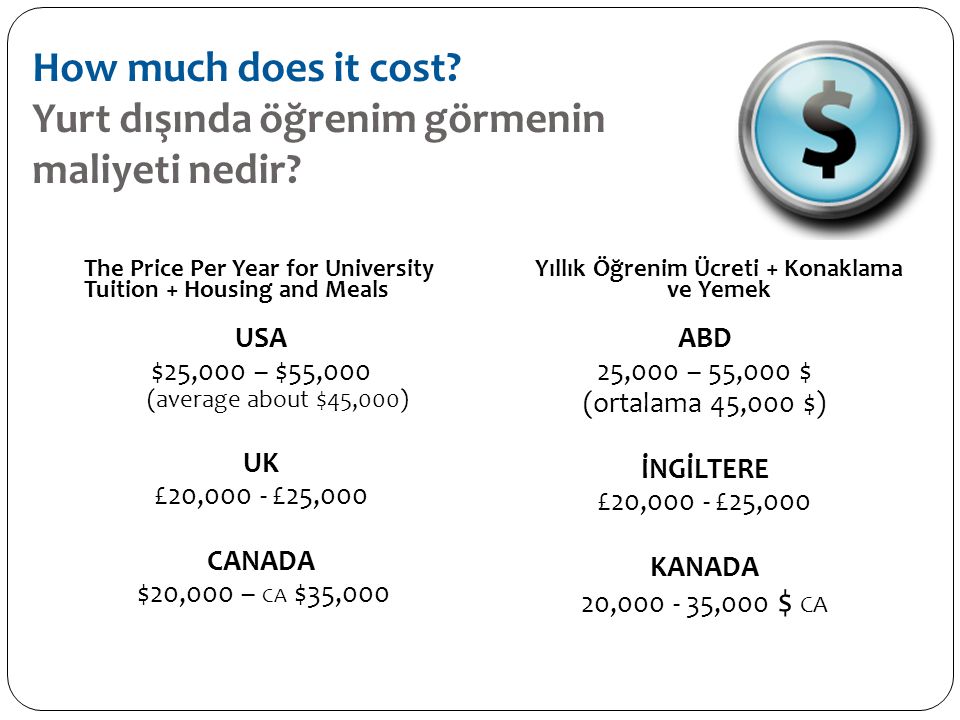
If you evaluate 120 pounds, you might not wish to obtain stuck with a 900 extra pound device. If you are going to be riding locations where you could roll your ATV, there is a big distinction between 300 pounds and 900 pounds surrendering you.
Ultimately, the weight of the ATV is going to figure out, to an extent, how much control you have as well as how greatly you can turn in some situations.
Table of Contents
The weight of ATV is divided into dry weight and curb weight. Lots of manufacturers don't specify the completely dry weight of their ATV. They make use of something called curb weight or wet weight, which basically have the same meaning.
While completely dry weight is when the ATV is empty of all fluids (gas, oils, brake fluid, coolant, etc), curb weight or wet weight is the ATV's weight with all fluids complemented in their suitable containers. Curb weight includes common devices but not either travelers or cargo.
The completely dry weight of ATVs varies from concerning 220 pounds to 1170 pounds. Dry weight is the ATV's weight with no cargo, liquids, or passengers.
The average weight of a recreational ATV and utility ATV is approximately 700 pounds. The weight of an ATV mainly depends upon the size of its engine.
Discovering the best ATV depends on various elements like engine power, measurements, and weight. Before you get an ATV, find out and understand these factors. So, kick back, loosen up, as well as enjoy finding out about ATV weights.
Let's take a look at the weight of ATVs with different engine sizes.
50CC ATVS
The tiniest entry-level youth ATVs are, certainly, the lightest. The average weight of a 50cc ATV is approximately 215 pounds. The heaviest 50cc ATV I discovered was the Yamaha Raptor 50, which weighs 237 pounds. The lightest 50cc ATV I discovered was the Suzuki QuadSport Z50, which weighs only 174 pounds. Most of the ATVs I saw fell in the 210-225 pound range.
The lightest 50cc ATV I discovered was the Suzuki QuadSport Z50, which weighs only 174 pounds. Most of the ATVs I saw fell in the 210-225 pound range.
70CC ATVS
I could just discover a few name-brand ATVs in the 70cc class. The ordinary weight of those was about 250 pounds.
90CC ATVS
This is most likely one of the most prominent sized ATVs for children. The ordinary 90cc ATV is approximately 265 pounds. The largest 90cc ATV I discovered was the AlphaSports Daisy 90, which weighs 289 pounds. The lightest, by a single pound, was the Bombardier DS 90, which considers 249 pounds. The majority of the 90cc ATVs I saw were in the 250-260 pound array, with a few larger exceptions skewing the standard.
200CC ATVS
200cc is the class where we begin getting involved in the larger youth model, but there is not a massive selection at 200cc.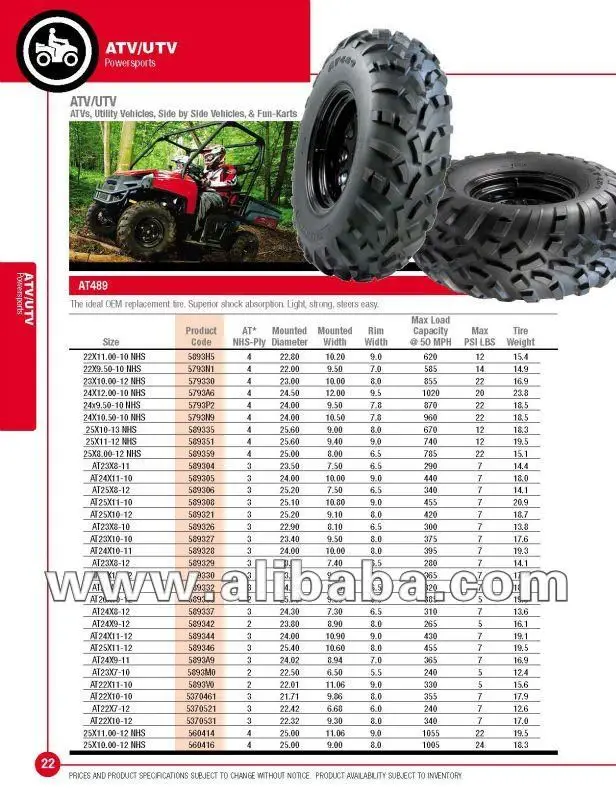 The ordinary 200cc ATV weighs regarding 365 pounds. That standard is again skewed by an outlier in the super-light Yamaha Blaster, which just weighs 250 pounds. A lot of the other 200cc ATVs remained in the upper 300s or reduced 400s, with the Polaris Saw Tooth topping the graphes at 425 pounds.
The ordinary 200cc ATV weighs regarding 365 pounds. That standard is again skewed by an outlier in the super-light Yamaha Blaster, which just weighs 250 pounds. A lot of the other 200cc ATVs remained in the upper 300s or reduced 400s, with the Polaris Saw Tooth topping the graphes at 425 pounds.
250CC ATVS
The typical 250cc ATV is approximately 410 pounds. The lightest, by a rather wide margin was the Honda TRX 250EX, which weighs only 360 pounds. The heaviest 250cc ATV I located was the Yamaha Big Bear 250, which considers 456 pounds.
300CC ATVS
300cc is not a preferred class of ATVs so there weren't numerous options. The heaviest 300cc ATV I found was the Polaris Hawkeye, which considers 550 pounds. The lightest 300cc ATV I located was the Arctic Pet cat 300, which weighs 477 pounds. The average 300cc ATV weighs about 510 pounds.
350CC ATVS
The ordinary 350cc ATV is approximately 490 pounds.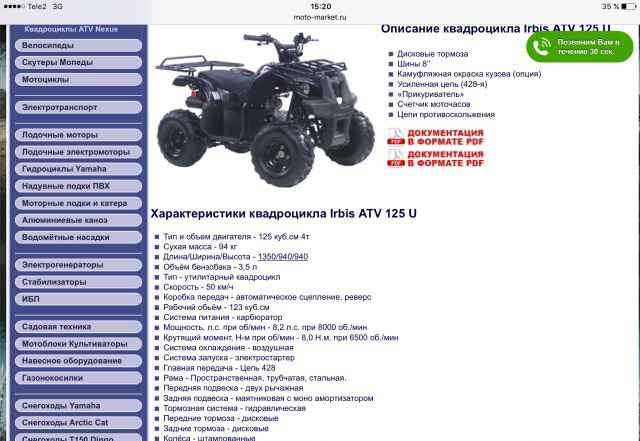 This number was skewed downwards by the 375 pound Yamaha Raptor 350, which is approximately 375 pounds. The majority of the 350cc ATVs I saw were closer to, or over, 500 pounds. The heaviest 350cc ATV is the Arctic Pet cat 350, which weighs in at a reasonably tremendous 588 pounds.
This number was skewed downwards by the 375 pound Yamaha Raptor 350, which is approximately 375 pounds. The majority of the 350cc ATVs I saw were closer to, or over, 500 pounds. The heaviest 350cc ATV is the Arctic Pet cat 350, which weighs in at a reasonably tremendous 588 pounds.
400CC ATVS
At 400cc, we start entering the adult-sized ATVs. The ordinary 400cc ATV is approximately 495 pounds. This is the lightest class where we really begin seeing some substantial varieties in weight with raw distinctions between sport and utility models. The lightest and heaviest 400cc ATVs are from Arctic Pet cat. The lightest is the Sporting activity DVX 400, which is approximately 372 pounds. The heaviest is the 400 4X4 Automobile, which is available at 645 pounds.
450CC ATVS
The ordinary 450cc ATV weighs is approximately 520 pounds, however, there is a large distinction between the sport as well as utility versions in this class. The lighter sporting activity models typically are less than 400 pounds. The lightest of which is the Yamaha YFZ 450, which evaluates 350 pounds. The heavier utility models are 500-700 pounds. The heaviest I saw was the 696-pound Polaris Sportsperson 450.
The lighter sporting activity models typically are less than 400 pounds. The lightest of which is the Yamaha YFZ 450, which evaluates 350 pounds. The heavier utility models are 500-700 pounds. The heaviest I saw was the 696-pound Polaris Sportsperson 450.
500CC ATVS
The average 500cc ATV is approximately 630 pounds. The two outliers bringing the average weight down are the Polaris Hooligan 500, at 425 pounds, and also the Polaris Predator 500, at 405 pounds. Most of the various other 500cc ATVs I examined weighed greater than the standard of 630 pounds. The heaviest 500cc model I found was the Polaris Sportsperson 500 X2 EFI, which is approximately 791 pounds. As you may be catching on, The different Polaris Sportsperson ATVs are typically heavier than their equivalents.
650CC ATVS
The typical 650cc ATV is approximately 635 pounds. The heaviest model I discovered at 650cc was the Arctic Feline h2 TRV Plus, which weighs in at 724 pounds. The lightest 650cc ATV I found was the Bombardier DS 650X, which had not been just the only 650cc ATV I discovered under 600 extra pounds, it was under 500 extra pounds, at simply 494 pounds.
The lightest 650cc ATV I found was the Bombardier DS 650X, which had not been just the only 650cc ATV I discovered under 600 extra pounds, it was under 500 extra pounds, at simply 494 pounds.
700CC ATVS
At 700cc, we see our largest space between the lightest as well as heaviest ATVs. The Yamaha Raptor 700R weighs an amazingly light 396 pounds. On the various other end, the Arctic Cat 700 Diesel weighs in at 809 pounds. Keeping that large spread, the ordinary 700cc ATV weighs in at 645 pounds. While the Yamaha Raptor is without a doubt the lightest, you can discover a 700cc ATV at almost any kind of weight you desire, with multiple models readily available in the 500s, 600s and 700s for pounds.
800CC ATVS
At 800cc, we are entering the truly huge ATVs. The average 800cc ATV is approximately 715 pounds. The Bombardier Abandoner 800 is probably the only 800cc ATV you can locate under 600 pounds, as well as it weighs in at 597 pounds. The heaviest of the bunch is the Polaris Sportsman 800 X2 EFI, which evaluates 839 pounds. Most of the 800cc ATVs are going to be plus or minus 50 pounds of 700 pounds. Without a doubt, the average 800cc ATV weighs about 715 pounds.
The heaviest of the bunch is the Polaris Sportsman 800 X2 EFI, which evaluates 839 pounds. Most of the 800cc ATVs are going to be plus or minus 50 pounds of 700 pounds. Without a doubt, the average 800cc ATV weighs about 715 pounds.
1000CC ATVS
Ultimately, we reach the biggest of the bunch. The most powerful, as well as heaviest, ATVs out there are mosting likely to be the 1000cc ATVs. The average 1000cc ATV evaluates about 840 pounds. At 1000cc, you just can not discover a light model so there are many factors to consider that need to go into purchasing such a big model, other than simply power. The lightest 1000cc ATV I could locate was the Arctic Pet Cat 1000XT, which still evaluates 772 pounds. The heaviest 1000cc ATV I could locate was the Polaris Athlete XP 1000. At 927 pounds, that is an ATV you do not desire landing on you.
There are 3 reasons that the weight of your ATV is important.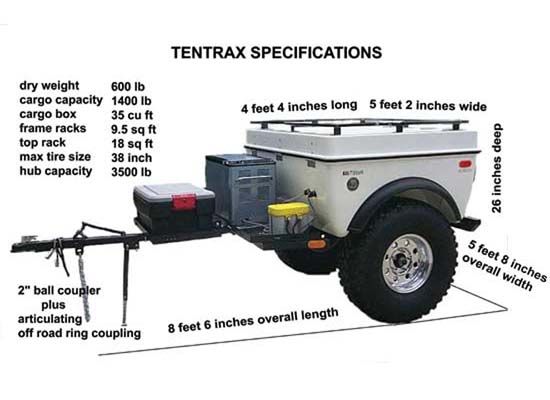
1. Transporting the ATV.
2. Utilizing the ATV to carry things.
3. Performance.
Let's go through each of them
Every trailer has a weight capacity, and you must not go over that.
Also, loading the trailer and the weight at specific points on the trailer affects towing too.
The vehicle you tow the trailer will also have a tow weight capacity that you must not go over. It’s not always about taking off but stopping. It would be best if you had a truck with enough weight that it won’t get thrown around when towing and has the braking power to stop.
Make sure you never exceed the towing capacity of your truck or trailer.
Don’t forget the weight of your gear and accessories too!
If what you tow is as well hefty, it raises the front wheels and also makes guiding impossible. However more notably, stopping is nearly impossible as well.
So don't tow things over your towing ability.
If you intend on using your ATV for towing things, you'll need to concentrate on purchasing heavier ATVs. The much heavier the ATV, the less complicated it is to regulate what you tow.
If you do a lot of towing, consider getting a side-by-side as they weigh a whole lot more and will do better at transporting.
The larger the ATV, the harder the engine has to work.
This is why you see the efficiency racing version 450's weigh so little contrasted to the utility ATVs.
If you like to go fast as well as play around, a lighter ATV will be what you need.
If you like to obtain the job done, after that the ATVs you want are on the much heavier end.
The major determinant of the weight of the ATV you will certainly buy is your designated purpose. Getting a hefty ATV has advantages over purchasing a lighter ATV.
A few of the benefits of a hefty ATV are:
1. Hefty ATVs execute much better over rough surfaces than lighter ATVs.
Hefty ATVs execute much better over rough surfaces than lighter ATVs.
2. Heavy ATVs have a much better shock absorber.
3. Hefty ATVs use much better convenience than lighter ATVs.
4. Heavy ATVs are faster and also have the very best acceleration.
Heavy ATVs also have disadvantages.
Several of the downsides of a heavy ATV are:
1. Heavy ATVs take in even more gas.
2. Heavy ATVs set you back greater than lighter ATVs.
3. Heavy ATVs are difficult to maneuver.
ATVs are not light as bicycles, they generally have an aluminum framework and incorporated with the engine as well as other parts, you will see a 500lb machine. Recognizing the weight of your ATV is essential if you are seeking to tow it to the mountains or a route. hauling the ATV with a pick-up will not be an issue, nevertheless, if you have a crossover SUV it might be more of a pain. Most crossovers can tow around 1000 pounds approximately if unless the ATV is a heavyweight, you shouldn't have any type of problems.
Most crossovers can tow around 1000 pounds approximately if unless the ATV is a heavyweight, you shouldn't have any type of problems.
Selecting the best ATV weight can be frustrating in some cases, however if you recognize the factors to be considered, you will have no trouble choosing the ideal one. If you ride ATVs for enjoyable, you possibly won't opt for a 1000cc ATV. That is totally far from your desired function. Picking the best ATV weight should be the least of your concerns as long as you recognize what you wish to use it for.
How Fast 125cc ATV Go? Most Complete Overview 2023
Rodney L Herron
Rodney L is a technical writer and product consultant with over a decade of experience in the motor industry. Rodney is a fan of performance machines that run fast and loud and an expert in all things custom. His numerous articles and write-ups are available at our knowledge base. Whether it’s something wrong with your motorcycle or you are building a custom bike, you can trust Rodney’s experience.
ATV
Saltreador
Yamaha YFM 350 R aka Raptor is an evil adrenaline rush toy. This sports ATV, despite the modest engine size, is able to Read more Yamaha YFM 350 R review →
ATVYamahaReviewsATV
Saltreador
ATV Honda TRX 650 Rinkon is devoid of any aggressiveness, both in appearance and in character. This is not a sports equipment and not a monstrously powerful "rogue" like a liter Renegade or Read more Honda TRX 650 review →
ATVHondaReviewsATV
Saltreador
Injection ATV Stels ATV 700 H is a solid, weighty utility vehicle. Of course, only cubic capacity makes it related to more expensive competitors, while Read more Stels ATV 700 review →
ATVStelsReviews Find: The John Deere Gator XUV 855D S4 is a four-seat UTV from a notorious manufacturer that can go almost anywhere you want, and[. ..]
..]
Many ATV enthusiasts don't mind their kids following in their footsteps. Models like[...]
The heavy ATV Arctic Cat 1000 Mud Pro is a real leviathan for small ATVs. He is able to wade through any, the most difficult terrain, with a roar[...]
The Honda Pioneer 700-4 utility buggy is not the only ATV that can take four people on board, but it is quite strong different[...]
Few people know that the world famous manufacturer KTM also produces ATVs, or ATVs. True, the line of four-wheeled friends at[...]
All-wheel drive sports ATV Yamaha Wolverine 450 fully justifies its name. The predatory appearance of this ATV really makes it look like a grouped[...]
The Stels UTV 800 Dominator all-terrain vehicle is the flagship of the Velomotors company of Russian-Chinese origin, the heaviest and most powerful of all ATVs and buggies[. ..]
Looking at the Arctic Cat TRV 700 utility ATV, you realize that you have already seen it somewhere. At least if you have ever[...]
The Stels ATV 600 Russian-Chinese utility ATV is aimed at those who want a powerful all-terrain vehicle, but do not want to overpay for a more famous brand.[... ]
Stels Wolverine S800 is an example of a domestic-made snowmobile, albeit with Chinese roots, which is quite capable of competing on equal terms with [...]
Straight lines
Two weeks ago we announced the direct line to our readers with Fischer cross country chief designer Hans Hubinger . And this meeting took place within the framework of the Fischer and Vauhti dealer seminar, which took place on September 19-20 at the Kavgolovo training center.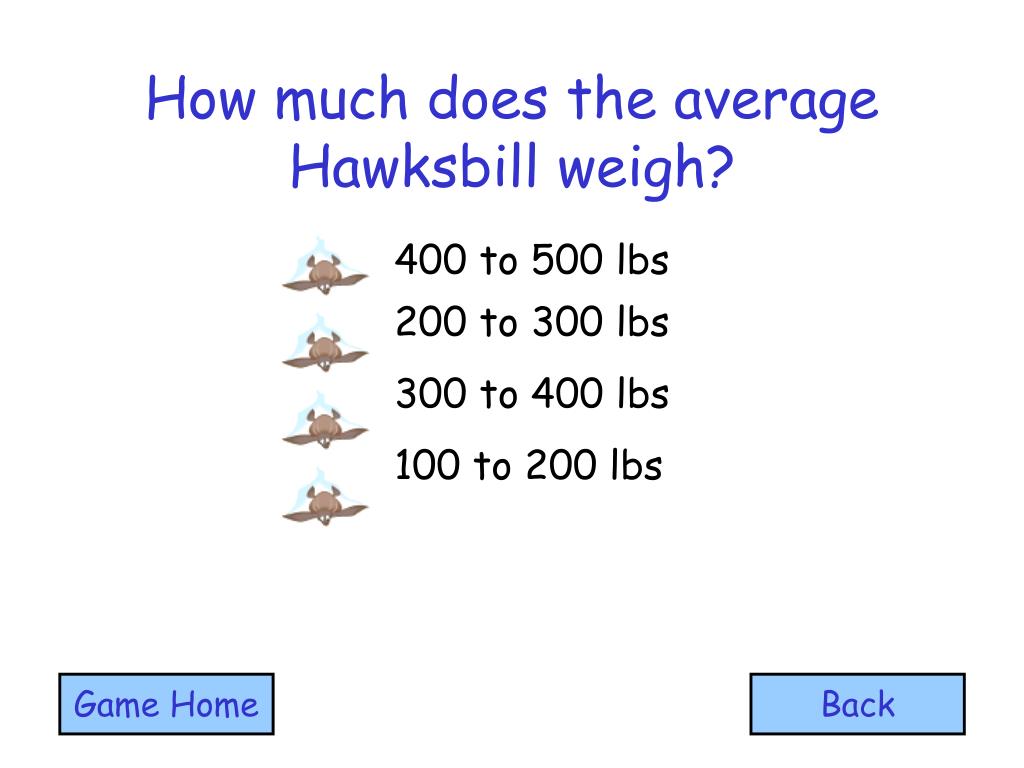 At this seminar, all Russian Fischer dealers were presented with the company's novelty - Speedmax 3D skis, tests of these skis in a ski tunnel, and were told about the latest Vauhti products. She helped me with the translation in this interview, and sometimes she herself answered some purely "Russian" questions, the head of the "cross-country skiing" division of Fischer-Moscow Elena Rodina .
At this seminar, all Russian Fischer dealers were presented with the company's novelty - Speedmax 3D skis, tests of these skis in a ski tunnel, and were told about the latest Vauhti products. She helped me with the translation in this interview, and sometimes she herself answered some purely "Russian" questions, the head of the "cross-country skiing" division of Fischer-Moscow Elena Rodina .
But before we move on to Hans and Elena's answers to your questions, I would like to at least briefly share with you my impressions of visiting the Kavgolovo training center. More precisely, I will not even share my impressions with you, but simply quote the words of Sergei Ivanov (the very well-known turbo grandfather in skiing circles):
- People live: they have a ski tunnel, a ski-roller track without any mothers with strollers and children on tricycles, without ATVs and dog lovers. Well, why should they, St. Petersburg, not train and run? nine0003
You should have heard how much in these two short sentences there was both admiration and some kind of disappointment because we don’t have anything like this in Moscow yet and it’s not expected . ..
..
For my part, I can say that I fully subscribe to the words of Sergei. Both the tunnel and the ski-roller track, compactly located on the territory of the training center and 100 percent fenced off from outsiders, are really impressive. Indeed, there is something to envy. nine0003
But let's get back to our today's interlocutors - Hans Hubinger and Elena Rodina.
Hans Hubinger (right) - chief designer of Fischer cross-country skis for the past 20 years, and Elena Rodina, head of cross-country skiing at Fischer-Moscow. Ivan Isaev
* *
- I was surprised to learn from this article (I open the paper magazine "Skiing" No. 60 for 2013, in which the previous direct line of our readers with Hans Hubinger ) that our meeting in 2013 was, it turns out, not the first, and that before that we also met in 2006 ("L.S." No. 35 for 2006) . Therefore, we have known each other, it turns out, for a thousand years.
Hans smiles back.
- OK, today I will ask you questions again not on behalf of the editors, but on behalf of people who directly use your products. nine0003
And the very first question from our readers - more precisely, this is not even a question, but a remark.
CMI
It is not entirely clear why this is not in the text, but let me add: Hans Hubinger is the man who invented all the Fischer cross-country skis in this century. Chief Designer. There is currently no more legendary figure in this area than Hans.
nine0105 Ivan:
- You know, the author of this remark is a rather mysterious character for us. He is well versed in the ski industry, for two years he wrote various materials and remarks on the openski.ru website, and again he did it anonymously, so no one knows who he is. Maybe Elena Rodina is hiding behind this nickname, or San Sanych Zavyalov, or Sergey Ivanov, or someone else - we don’t know who it is (Lena and Hans laugh at this assumption of mine). Hans, how do you comment on these words? nine0108
Hans, how do you comment on these words? nine0108
Hans:
- I started working in the company in 1986 and already in 1991 I was engaged in service at the World Championship in Val di Fiemme. When I joined the company, I started from scratch, I did not occupy the position that I am in now. I have been in my current position since 1998 and since then I have been fully responsible for all developments and technologies of Fischer professional skis. Your reader’s remark that I am a well-known person in skiing is flattering to me, but you need to understand that modern Fischer skis are the result of the teamwork of a whole group of people that I manage. nine0003
Ivan:
- Ok, let's start with questions then? They may not always be pleasant, but these are questions from our readers, and they concern Fischer products. So, below are two questions about Double poling skis.
Charade
How to choose skis marked DP (Double poling)?
Alexander Shabunin
In addition to the DP ski selection rules, I would like to know the current views of the Chief Designer on what kind of DP skis should be compared to a regular classic / skate for the same messenger - softer or stiffer, longer or shorter last, what about toe stiffness and ski length in general, etc.

The question is due to conflicting information on this subject in various sources ...
Ivan:
- Small note. Alexander Shabunin is a completely new generation skier from St. Petersburg. As far as I understand, he does not have very good skiing technique in its classical sense, and he would not soon have a chance to achieve any noticeable results in cross-country skiing, but then double-poling appeared! And this physically gifted guy just gets into the track, starts pushing with two and takes quite high places - for example, at the last "Finland Hiihto" he was, imagine, sixteenth! That is, his interest in skis for double poling is not accidental. nine0108
Hans:
- The difference between doublepoling skis and classic skis is stiffness. Doublepoling skis combine the stiffness of a skate ski with the deflection of a classic ski. Compared to traditional skating or classic skiing, double poling skis allow you to push off almost exclusively with your hands, but still refine with your legs and thus move forward. For longer distances we recommend classic double poling skis and for shorter distances double poling sprint skis. nine0003
For longer distances we recommend classic double poling skis and for shorter distances double poling sprint skis. nine0003
Let's explain so as not to get confused with the terminology. We have a Double Poling Sprint model, which is very similar to a skate ski, it also has a size like a skate ski - 191 cm. Accordingly, for a longer distance, we recommend using a classic version of double poling skis, close in length to ordinary classic skis.
Elena:
- I would like to add, for my part, that Hans still specializes more in serving the World Cup competitions, and no one really uses double-poling skis there. In winter, I consulted with the Norwegian representatives of Fischer on this issue, because. I think that the Norwegians have a lot of practice in this area. They explained to me that double poling skis have an undeniable advantage if there are a lot of climbs on the track. The special design of double poling skis allows the skis not to crash into the track, go up more smoothly and continue to slide in the rut when climbing at the same time without steps. If the distance is flat, then you can completely get by with ordinary classic or skating skis. nine0003
If the distance is flat, then you can completely get by with ordinary classic or skating skis. nine0003
Returning to the first question about selection, in general we recommend choosing doublepoling skis as klister skis.
When I asked the same aforementioned Norwegians: "Do you have any formula for how to convert the FA index into the weight of an athlete when choosing doublepolling skis?", They answered me that in fact such a formula does not exist. For example, Peter Eliassen has skis with FA from 38 to 48. Accordingly, the steeper the slope, the softer skis he uses, and on the flatter slope he uses harder skis. nine0003
Alexey Zhilin
About twin skin Carbon and SpeedMax.
* How to accurately select the weight with an eye on the race? The well-known FA selection plate has a twin skin section, but this also includes Race with mohair pasted over the sliding surface, and more racing models, where these modules are recessed into its thickness.
As a result, Race should be chosen with a huge margin in relation to ointments, but how are these 2 top models? On the test, it seemed that the Carbon, with the stiffness of conventional klister skis, b / less, works fine. What is Fischer's recommendation? nine0010
Hans:
- We recommend picking up 0.6 of the rider's weight. That is, with a weight of 80 kg, skis should be with a stiffness index of 48 +.
Elena:
- In my experience, Twin Skin SpeedMax skis can be taken even stiffer. Because the Carbon is currently the stiffest and most slippery model in the range, while the Twin Skin SpeedMax and Race are softer. Accordingly, SpeedMax can be taken as 0.65. nine0003
Alexey Zhilin
What are the differences in the last (902 and 90L)? How do they manifest themselves in practice?
Hans:
- If we compare 902 and 812 designs, then 902 has a longer last. And in the 90L model, the block is even longer than in the 902nd. When the trail is very rough, 90L skis have the upper hand. But overall the 902 is a more versatile design than the 90L.
And in the 90L model, the block is even longer than in the 902nd. When the trail is very rough, 90L skis have the upper hand. But overall the 902 is a more versatile design than the 90L.
Alexander Simendeev
- What is the formula for selecting junior skating fisher speedmax?
Why are there so many rumors about Ukrainian skis in the top segment, despite Fischer's official position?
Hans:
- Technologies of cold gluing of a sliding surface are available only in Reed. Therefore, we do not know why these rumors about the production of certain skis in Ukraine constantly arise, but your reader can only take my word for it that this is not so. nine0003
Elena:
- I myself have a small explanation for this misconception: we have a children's ski model in our line, which is called "Sprint" - here it is just made in Mukachevo. And this ski is very similar in design to adult professional skis. Perhaps this is due to the fact that people who have seen something somewhere in Mukachevo think that Sprint is also an adult ski.
And this ski is very similar in design to adult professional skis. Perhaps this is due to the fact that people who have seen something somewhere in Mukachevo think that Sprint is also an adult ski.
Regarding the selection - junior skis are selected in the same way as adults: 100 - 120 percent of a person's weight. The only thing we all understand is that with the same height, juniors always weigh less than adults. Naturally, junior skis with the same size will be softer than adults. nine0003
bkmz
When will carbon lite skate skis without toe holes appear?
Alexey Sedenkov
One question.
what is the meaning of the holes at the ends of the skis?
Ivan:
- In general, there are several such questions about holes in the toes of skis, and these questions are constantly heard in Russia. People don't really believe that these holes are needed; do not really believe that they really work. Naturally, I will not speak for everyone, but this is a fairly common opinion.
People don't really believe that these holes are needed; do not really believe that they really work. Naturally, I will not speak for everyone, but this is a fairly common opinion.
Hans:
- As a technologist, I firmly declare that the hole in the toe of the ski is not a marketing ploy. After conducting various studies, we found that when we remove the weight from the toe of the ski, even if it is only a few grams, on the shoulder, which is obtained when the ski is working, the effect increases several times, as if a geometric progression appears. That is, conditionally, we remove a couple of grams from the toe, and in terms of effect, in terms of physical strength, this is equivalent to as if we had removed several times more. And again, the lightening of the toe allowed us to lengthen the front of the ski. That is, by reducing the weight of the toe, we shift the balance of the ski back and thereby improve glide. Because the farther the balance point is from the heel, the better the ski works. nine0003
nine0003
To be honest, since we made that hole, this is the first time I've heard of anyone asking for everything back. In fact, we are constantly working on the reliability of skis, we have no complaints, the only thing that occurs is when skis break during transportation. It really is, but you just have to be careful when transporting skis. And, to be honest, I can’t even imagine Fischer skis without holes in the toe. The only thing that might be more convenient would be to apply structure to the ski without a hole in the toe, but we cope with this and believe that this is a very important technological advantage over our competitors. nine0003
Ivan:
- Do I understand correctly that this technology has been adopted all over the world and no one has any questions, and this is a purely Russian phenomenon - to ask the question about the appropriateness of these holes over and over again?
Hans:
- I'm hearing about it for the first time.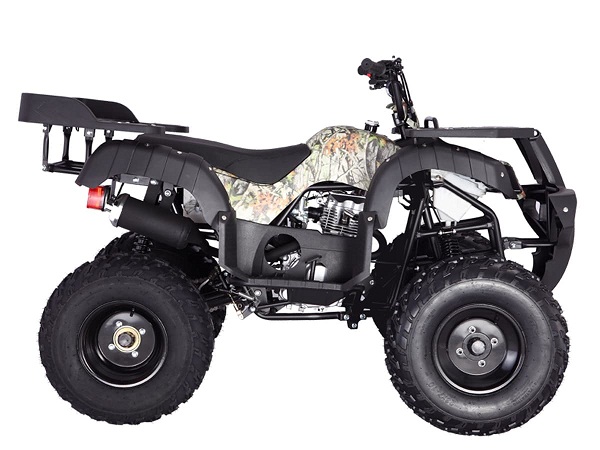 In fact, in professional sports, no one has ever contacted me with a statement that it is inconvenient for him that there are holes in the toe of the skis. Moreover, I have seen many times skis from different manufacturers standing against the wall (for example, in the service of one or another national team). And you can see that skis of the same size on Fischer always have bindings a little lower, a little closer to the heel compared to competitors. This effect is achieved thanks to this very hole in the toe. If it were only marketing, I would be the first to oppose this innovation as a technologist. Because cutting a hole in the toe is a rather complicated and expensive technological process, and if it is done only to tell beautiful stories… There would be no point in it, because it is quite difficult to do it technologically. nine0003
In fact, in professional sports, no one has ever contacted me with a statement that it is inconvenient for him that there are holes in the toe of the skis. Moreover, I have seen many times skis from different manufacturers standing against the wall (for example, in the service of one or another national team). And you can see that skis of the same size on Fischer always have bindings a little lower, a little closer to the heel compared to competitors. This effect is achieved thanks to this very hole in the toe. If it were only marketing, I would be the first to oppose this innovation as a technologist. Because cutting a hole in the toe is a rather complicated and expensive technological process, and if it is done only to tell beautiful stories… There would be no point in it, because it is quite difficult to do it technologically. nine0003
I remember very well how this technology appeared. The model has just appeared, and in order to make a decision, we did an internal test on a glacier with Fischer servicemen - only they tried this novelty. And then I asked those who participated in these tests: well, are we moving in this direction? And they answered: "Yes, definitely, we produce such skis." The model was developed for the World Championships in Liberec, the athletes received these skis three days before the start of the competition, and I was very worried, because. was not sure that the athletes would accept this model. As a result, maybe not 100 percent, but 70 percent of the athletes performed in Liberec on these skis, and this despite the fact that they received these skis three days before the start of the championship. For me, this was an incredible result. Yes, at first the skis sometimes broke on the toe, but we improved the materials, changed the technology, and now there is no such problem. I understand - everything can be broken, skis break in other places, not only in the toe. We can make skis with thick walls in the toe, but they will be heavier. What's the point of making that hole then? nine0003
And then I asked those who participated in these tests: well, are we moving in this direction? And they answered: "Yes, definitely, we produce such skis." The model was developed for the World Championships in Liberec, the athletes received these skis three days before the start of the competition, and I was very worried, because. was not sure that the athletes would accept this model. As a result, maybe not 100 percent, but 70 percent of the athletes performed in Liberec on these skis, and this despite the fact that they received these skis three days before the start of the championship. For me, this was an incredible result. Yes, at first the skis sometimes broke on the toe, but we improved the materials, changed the technology, and now there is no such problem. I understand - everything can be broken, skis break in other places, not only in the toe. We can make skis with thick walls in the toe, but they will be heavier. What's the point of making that hole then? nine0003
Ivan:
- As far as I understand, the rejection of this model lies not only in the fact that they break, but also in the fact that on real ski slopes, that is, not on the World Cup slopes, under certain weather conditions, snow flies through this hole.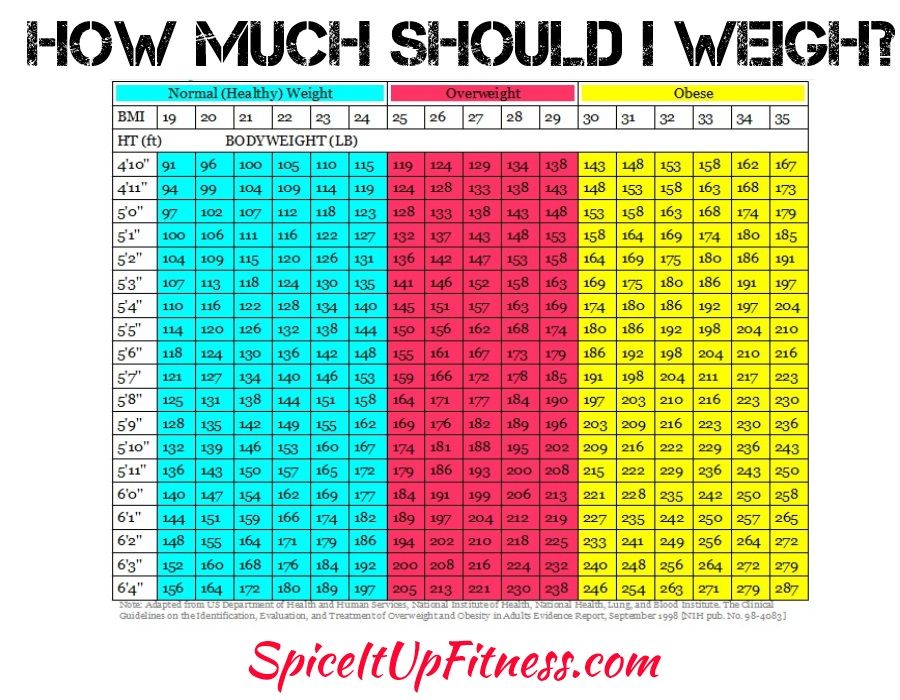 I've seen ironic pictures of Fischer ski toe caps sealing these holes with duct tape. The problem is also in this.
I've seen ironic pictures of Fischer ski toe caps sealing these holes with duct tape. The problem is also in this.
Elena:
- Sometimes, when an athlete stands on the descent in a standing position, snow flies even in the face. nine0003
Hans:
We calculated all this. The maximum where snow flies is in the knee area, it definitely does not fly higher. And I would also like to say that when snow passes through the hole in the toe of the ski, this is not a disadvantage, but, on the contrary, an advantage - it cools and ventilates the legs perfectly (Hans, however, laughs and explains that this is a joke).
You know, it seems to me that the fact that the snow flies over the headland was just one of the reasons for the success of these skis in Liberec. There were just such conditions, soft snow. That is, when you ride on ordinary skis, you kind of crush, push this fresh snow and the ski starts to work unstably, starts to vibrate, and the hole passes this snow through itself, and the ski behaves more stable on the descent.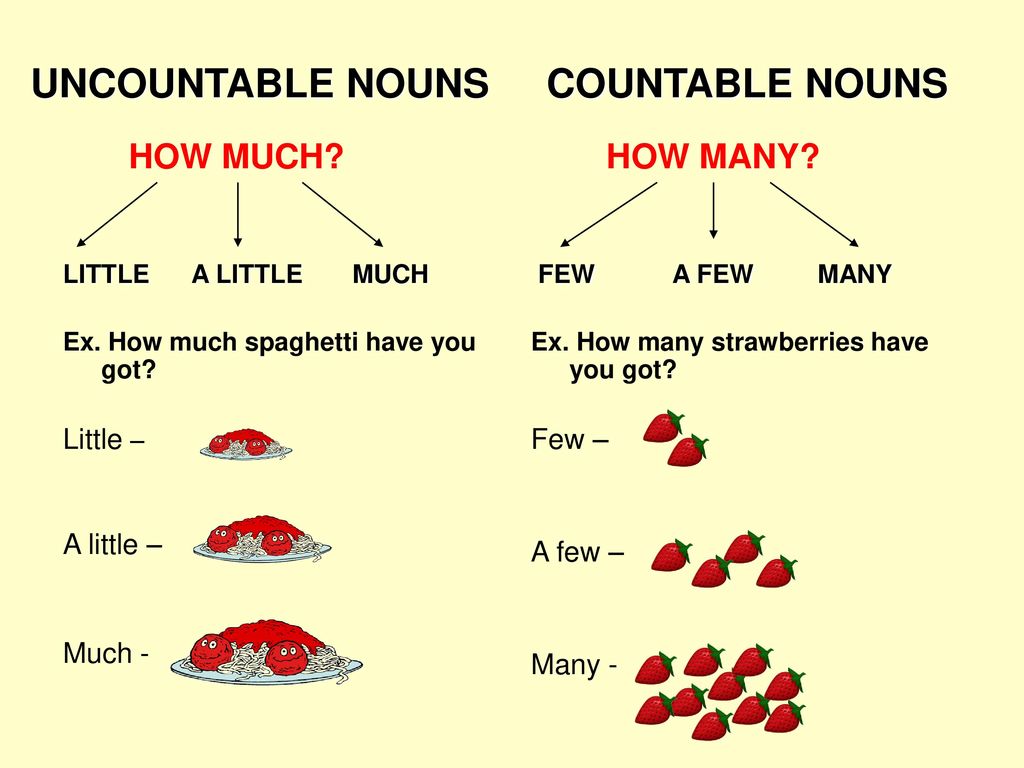 And in this case, the feeling of stability, stability of a ski with a hole in the toe is better than that of a traditional ski. nine0003
And in this case, the feeling of stability, stability of a ski with a hole in the toe is better than that of a traditional ski. nine0003
Ivan:
- This innovation of yours is already 10 years old. Why don't other ski manufacturers follow the same path?
- This is a good question. It seems to me that other companies don't use toe holes because they don't want to support our technology. If someone else releases something similar, it will be proof that Fischer has indeed released an innovative product. However, everyone is on the path to lightening the weight of ski toes and you know that other manufacturers are now making toes shorter and shorter, and now they are almost non-existent. But the FIS regulates this by the rules - it is impossible to shorten the toes endlessly; besides, in my opinion, the way of shortening the toe is dangerous. The technology for producing a hole in the toe is expensive - to make the framing of this hole strong, so that skis with such a hole do not break when touched with an obstacle, rather expensive composite materials are required - apparently not everyone can afford it. But, if you know, Kastle entered the market this year, which has revived, and it plans to produce skis with a hole in the ski toe. nine0003
But, if you know, Kastle entered the market this year, which has revived, and it plans to produce skis with a hole in the ski toe. nine0003
Ivan:
- Thank you for these clarifications, but let's try to briefly answer the specific question of our reader: will there be carbonlites without holes or not?
Hans:
- Not.
Elena:
- In fact, for many years our third model from the top - RCS - was without a hole. But this model was produced in this form only thanks to the position of the Russian representative office of Fischer, because I always said that at least one such model should be left for Russia. And when two or three years ago I gave up and said: "Okay, do it," all Europeans had an indescribable joy - I did not even expect such a reaction. It turns out that they have been waiting for this for a very long time, and only we, as representatives of the largest ski market in the world, held back this process.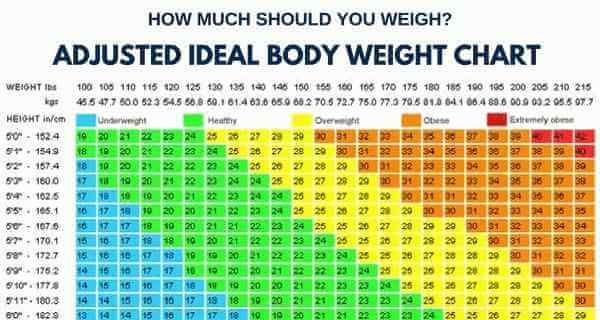 nine0003
nine0003
Andrey Krasnov
Hans, when do you think classic skis will appear that will allow you to completely abandon the holding ointment? Will Fischer be the first to have these skis?
Hans:
- Of course, we hope that we will be the first in this (smiles). We are very close to making a full-fledged competition ski with skins. Now all options for refusing holding ointments are connected precisely with skin technology, and all world brands have such skis. So far, in professional sports, traditional skis work better. Weather conditions are different, and there will always be a need for traditional skis. nine0003
Andrey Krasnov
3D - at first glance, pure marketing, is there really no way to progress in cross-country skiing, that the "slippery sidewall" is positioned as the main innovation?
Hans:
- For us, the sliding sidewall is the next step in the development of technology.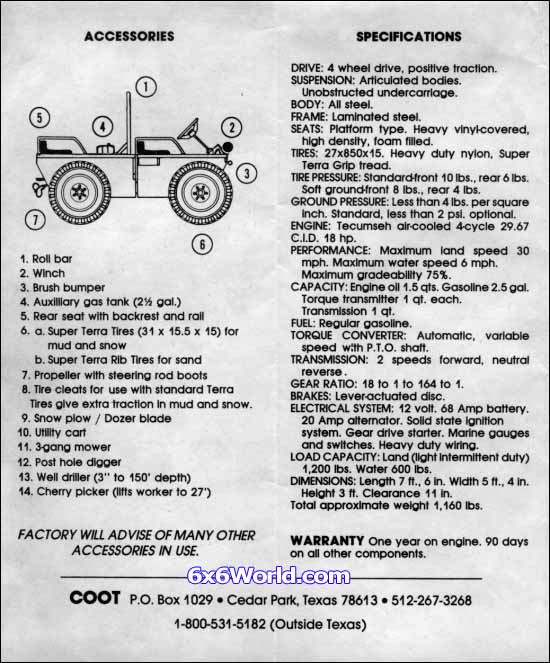 Perhaps someone considers this a small change, but depending on how you look at it. Every year we try to make some changes to the ski design based on the information that we receive during internal tests and from leading athletes, but not all the results of this work are announced to the general public. All our innovations have been repeatedly tested in practice by both Fischer employees and professional racers. Often we use materials that are not so easy to use in traditional production. For example, now we have started using polyethylene on the sidewalls, because this innovation allows us to reduce friction. We have made significant investments in the production process to implement this technology. It makes no sense to make such investments in production just because of marketing. We believe in this technology. nine0003
Perhaps someone considers this a small change, but depending on how you look at it. Every year we try to make some changes to the ski design based on the information that we receive during internal tests and from leading athletes, but not all the results of this work are announced to the general public. All our innovations have been repeatedly tested in practice by both Fischer employees and professional racers. Often we use materials that are not so easy to use in traditional production. For example, now we have started using polyethylene on the sidewalls, because this innovation allows us to reduce friction. We have made significant investments in the production process to implement this technology. It makes no sense to make such investments in production just because of marketing. We believe in this technology. nine0003
Skis Fischer Speedmax 3D.Fischer
Andrey Krasnov
Is Fischer working on a carbon ski chassis? Will a carbon-fibre ski allow you to faithfully reproduce its performance in the future and not have to deal with things like matching and pairing skis?
nine0105 Ivan:
- Followed by a comment from the same anonymous CMI : "Just ask this question to Hans at the very end of the conversation, otherwise he will talk endlessly" (everyone laughs).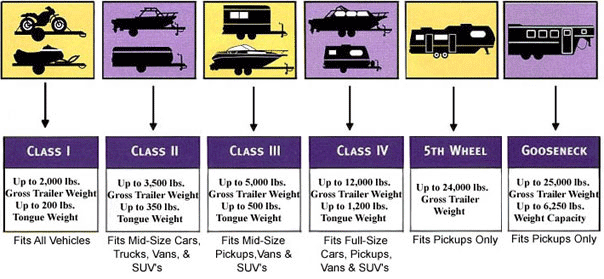 Is this really an interesting question for you?
Is this really an interesting question for you?
Hans:
- Oh sure. This is not the first time I have been asked this question and, of course, it is an interesting one. Everyone knows that carbon is a very important material in sports, take cycling as an example. But a ski is not a bike, the most important thing about a ski is its performance, and the stiffness of the ski and its weight are far from the most important among these characteristics. If we only look at the weight of the ski, then of course the best solution would be to make a carbon ski. It’s not so easy for me to explain this, but in general, the ski must have a certain flexibility - when loaded, it must bend in a certain way, spring back and transfer energy to the athlete. And let's put it this way - making a one-piece carbon ski is not the surest way to design a ski with optimal performance, because carbon does not have the necessary elasticity. In the manufacture of the ski, we tried to use different combinations of various materials: carbon fibers, fiberglass, wood, we experimented a lot in this area, and we believe that the combination of materials that Fischer uses now is the most optimal in order to store energy inside the ski and later pass it on to the athlete. If we made a completely rigid carbon chassis, for example, carbon skate skis, then, from our point of view, such a ski would behave too aggressively on the snow, the push energy would go into the snow, transforming it. nine0003
If we made a completely rigid carbon chassis, for example, carbon skate skis, then, from our point of view, such a ski would behave too aggressively on the snow, the push energy would go into the snow, transforming it. nine0003
Osipov Vladimir
1. How ethical is the existence of the so-called "sport shop" in relation to tens of thousands of amateur and beginner athletes around the world who buy top-end skis with the same design at full price in sports shops, and how do you justify this?
Hans:
What you call a sports workshop, we call an experimental workshop. It allows us to create different structures, use different sliding surfaces and practice all these innovations on top-level athletes. Sometimes we make custom skis for top athletes, but we do it to study the overall performance of a particular ski. Top athletes have a very good feel for the skis and can give the right feedback on the performance of the ski. This allows in the future to make serial skis with such parameters. But even top-level athletes get only part of their skis from the experimental shop, and the rest of their skis, they get from the general assembly line, that is, these are the skis that you can also buy in the store. The only advantage of top athletes is that they have the opportunity to skate these skis and return those that did not suit them. nine0003
This allows in the future to make serial skis with such parameters. But even top-level athletes get only part of their skis from the experimental shop, and the rest of their skis, they get from the general assembly line, that is, these are the skis that you can also buy in the store. The only advantage of top athletes is that they have the opportunity to skate these skis and return those that did not suit them. nine0003
And the main task of ski production in the experimental workshop is to find new, the best models for future mass production. An amateur athlete who buys skis in a store can be sure that these skis are exactly the same as those of top athletes.
Osipov Vladimir
2. Why Fischer skis, especially the "Skate" models, when selected for the weight of an athlete according to FA and HR, often turn out to be too stiff according to the "flexometer", which is further confirmed in real practice on the track.
Such an error does not lead to the return of the pair, this is not provided, but to the purchase of another pair. This is right? nine0010
Hans
- I don't know what a flexometer is, so I find it difficult to answer this question.
Osipov Vladimir
3. Why are there no "Skate" skis of soft stiffness for light weight athletes, and especially in combination with tall people? Or are such skis produced, but there are no orders from Russia? nine0003
Elena:
- There is a request for such skis, but it is small. We have a certain minimum for the production of each size, each stiffness. All over the world, skating skis with Soft stiffness are not ordered in the volumes required for production. Under the order, we can find such skis in our warehouse with a high degree of probability. In the same way as it is realistic to find short and at the same time very hard skis. For example, even here in the tests there is a 181 cm ski for 70 - 75 kg. Everything is possible, but it must be specially ordered, for example, in the Fischer store. And we will try to find exactly what we have been asked. nine0003
For example, even here in the tests there is a 181 cm ski for 70 - 75 kg. Everything is possible, but it must be specially ordered, for example, in the Fischer store. And we will try to find exactly what we have been asked. nine0003
Osipov Vladimir
4. The release of skis with the NIS platform, and then IFP, restricts the purchase for athletes using SNS, and now NIS. Has it affected sales?
Elena:
- This year there is such a large pre-order for new racing skis that Fischer is forced to shift part of the production to a later date - the factory simply cannot cope with orders. Therefore, very often we are told one thing - for example, that we are doing something wrong at Fischer - and the order volumes show the exact opposite picture. nine0003
alex57
Such a question: on Fishers, comparing them with Salomons, Atomics, Rossi and Madshuses, the shift of mounts (such as Rotafell) back and forth for some reason has a much lesser effect.
Is this a consequence of the significant difference between Fisher's design and other firms? MB is just a specific instance and there really is no such effect (for an amateur, of course, statistics are not great)? How do you think? nine0010
Hans:
- You need to understand what kind of skis we are comparing - skating or classic? In skating, I can agree that binding shifting has less of an effect than other brands. A lot of it depends on our design and how we manufacture skis. We have our own philosophy, and each brand, of course, has its own. In classic Fischer skis, shifting the bindings back and forth has a significant effect. nine0003
Dmitry Izh
RCR SK adults 2018/2019 (loved the price):
1. Made in Ukraine or Austria?
Elena:
- The most interesting thing is that these skis are not represented in Russia at all.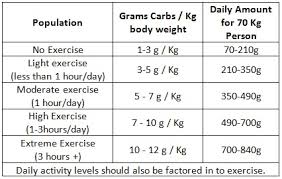 But I can answer the first question: Austria.
But I can answer the first question: Austria.
nine0003
Dmitry Izh
2. Cellular 100% or is there foam in the core?
Hans:
- Foam is not used in Fischer cross-country skis.
Dmitry Izh
3. What is the structural difference from RCS - more about basalt fabric? nine0010
Hans:
- RCR has a universal sliding surface, and RCS has a warm sliding surface, this is the main difference. RCR uses less carbon fiber and more basalt
* *
Further - questions that were not asked in the comments to the announcement of a direct line with Hans Hubinger, but came directly from video bloggers well-known in the Russian skiing world - Alexander Bezginov and Maxim Tartynsky. nine0003
Alexander Bezginov
1.
If at KM everyone drives 610 designs, it turns out that it is the best and most versatile. Does it make sense to leave 115 at all - purely for simpler skis?
Hans:
- We use the 115 design in more affordable models because this design allows people with even not very good technique to slide longer on the ski so that the ski turns over as late as possible - this is important in skating. It is this design that makes it possible. nine0003
Alexander Bezginov2. As a chief designer, do you really see the benefits of a hole in your nose?
Hans:
- This question has already been answered.
Alexander Bezginov
3. Are there any plans to bring back the skis without a platform?
Hans: Not planned. nine0003
* *
Now questions from Maxim Tartynsky.
1. Why doesn't Fischer have very cold joints? At -25-35, for example - after all, in Russia there is often such a temperature. And will such be developed?
Hans:
- Our cold skis are used in a fairly wide temperature range and it is very important for us that our only model for this temperature is as versatile as possible. Still, extremely low temperatures are not so common - mainly in Russia and Canada. nine0003
Elena (to Hans):
- And if, under conditions of very low temperatures, the structure is removed altogether, will it work?
Hans:
- In extremely low temperatures, it may be better to have skis with no structure at all, that is, absolutely smooth. But you need to understand that such skis will work only under conditions of low temperature and low humidity.
Elena:
- By the way, I want to add on my own behalf that Kuzmin's cycles at strong sub-zero temperatures have the right to life. And if it's still a little warmer, then here ... (Lena thinks, looking for a suitable wording). Here, everyone must decide this question for himself. nine0003
And if it's still a little warmer, then here ... (Lena thinks, looking for a suitable wording). Here, everyone must decide this question for himself. nine0003
Maxim Tartynsky
3. Do you agree with the statement that cold A5 base should be made only with cold (refractory) paraffins, and warm 28 should be made with warm (soft) paraffins?
Hans:
- Yes, it's right. More precisely, let's put it this way - this statement is absolutely true for the cold A5 base. But the warm 28th base does not have such rigor. If the skis are prepared for a long distance, then harder cold paraffins can also be used. Preparing cold skis with warm soft paraffins definitely does not make sense. nine0003
Maxim Tartynsky
4. C-special surface (with yellow plastic) needs to be prepared somehow in a special way, or in the same way as a regular, graphite-containing (black?)
Hans:
- We recommend using the same slip waxes as when preparing a graphite-containing surface.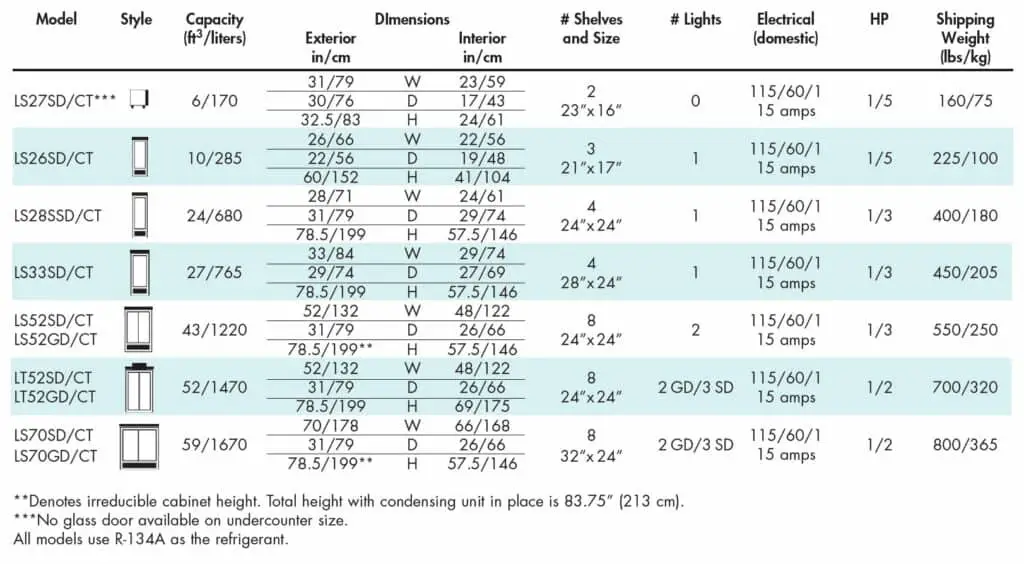 The most important thing with C-special skis is to use them in the right weather conditions - that is, on coarse loose snow. For some reason, many people think that this is skiing on the water, but this is not so. These are skis on slightly dried grain, firn. From other manufacturers, skis with transparent plastic are more versatile. FISCHER has narrow-range skis that work very well in their own weather conditions, but in other weather conditions, a more versatile choice of skis with black plastic. nine0003
The most important thing with C-special skis is to use them in the right weather conditions - that is, on coarse loose snow. For some reason, many people think that this is skiing on the water, but this is not so. These are skis on slightly dried grain, firn. From other manufacturers, skis with transparent plastic are more versatile. FISCHER has narrow-range skis that work very well in their own weather conditions, but in other weather conditions, a more versatile choice of skis with black plastic. nine0003
Maxim Tartynsky
5. Why did Speedmax 3D remove carbon inserts from the toe and heel?
Hans:
- We did not remove the carbon, it is integrated inside the ski, it just became invisible.
Maxim Tartynsky
nine0009 6. Is it possible to come to your factory (Ukrainian is also possible) and film how SpeedMax3D is made?
Hans:
- Unfortunately, this is prohibited by company policy, it is a trade secret.
Maxim Tartynsky
7. Do you agree that the technology of the sliding side surface is a useless technology, because even the greasers of the Russian team do not smear it? nine0010
Hans:
- I do not agree. The force of friction matters only in combination with pressure. The main friction forces act on the lower sliding surface of the ski. But under certain weather conditions, for example, in a skating race on a soft track, when you push off with a ski, there is quite a lot of contact between the sides of the ski and the snow, and then you naturally have pressure on the sidewalls, and force also begins to act here friction. When we talk about the sport of the highest achievements, when the struggle goes on for hundredths of a second, we cannot ignore this factor. In the classics, the skis are in contact with the side surface of the snow, for example, in turns. Of course, this impact on the sidewalls of skis does not always occur, it is not a priority, but when we talk about the best skis and the best athletes, when we talk about seconds and fractions of a second, this must be remembered. nine0003
nine0003
and van:
- Ok, Hans, thank you for this dialogue. We met and talked in 2006, then in 2013, now in 2019, and maybe our next meeting will take place somewhere in 2025? We (Skiing magazine) have been cooperating with Fischer for 23 years now, and why shouldn't our next meeting happen, say, in 2026, when our cooperation will be three decades old? nine0003
Hans laughs and says:
- An interesting idea, but it would be nice to live up to these times first.
* * * *
More to read:
Fischer is expanding its presence year after year in various market segments. Our correspondents tried to trace, with figures in hand, what has been happening in the ski industry over the past 16 years . This article from 61 issues of the "Skiing" magazine for 2013, we posted on the site quite recently, and so far it has only three hundred views. If you have not read this material in the paper version of the magazine, we advise you to get acquainted - there are a lot of interesting statistics.